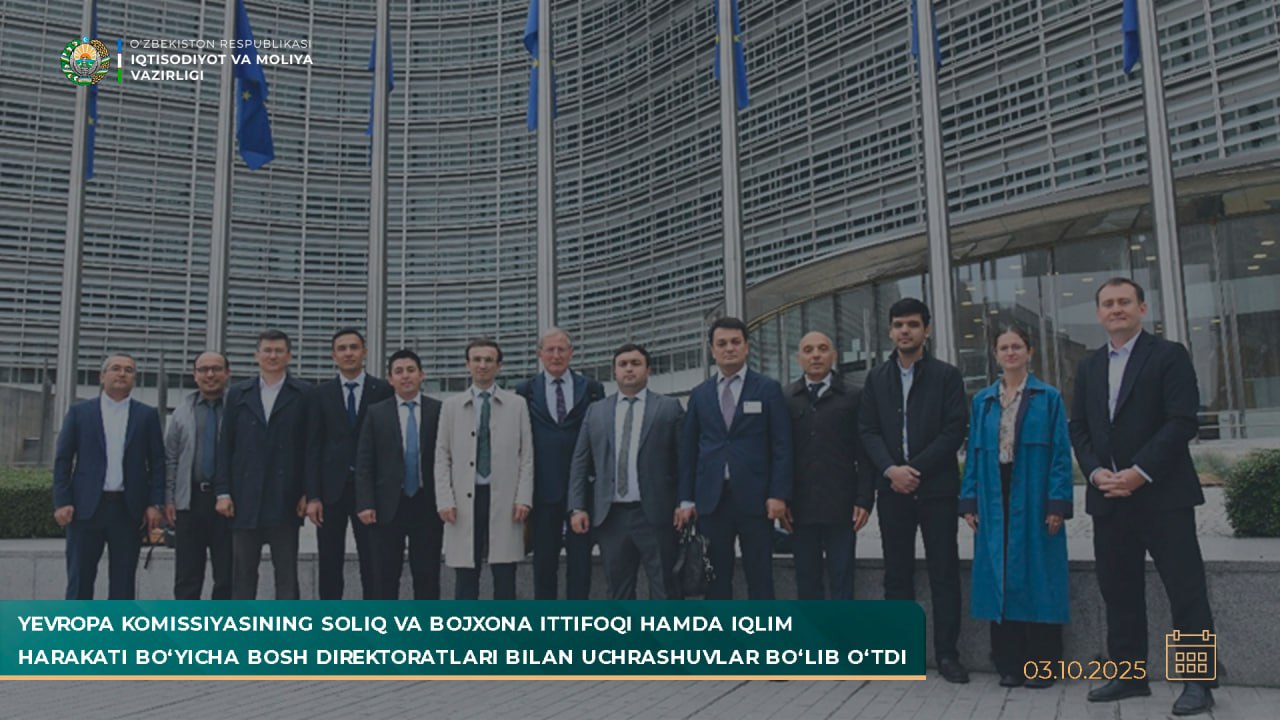TASHKENT, Uzbekistan, October 8. The Uzbekistan
delegation held a meeting with representatives of the European
Commission’s General Directorate for the Tax and Customs Union and
the General Directorate for Climate Action to discuss carbon market
mechanisms, the implementation of the CBAM (Carbon Border
Adjustment Mechanism) regulation, and cooperation on a low-carbon
economy, Trend
reports.
The first meeting focused on an exchange of views with Tomasz
Michalak, Coordinator for Eastern Europe and Central Asia of the
Department of International Coordination and EU Enlargement of the
General Directorate for Tax and Customs Union of the European
Commission, regarding the “Omnibus I” legislative package adopted
by the Council of Europe, aimed at simplifying and strengthening
the “Transboundary Carbon Regulation Mechanism.”
One of the main changes envisaged in this newly adopted
regulation is that products with a total volume of up to 50 tons
within the framework of the CBAM mechanism will not be affected by
this mechanism for one year.
At the same time, negotiations were held with representatives of
the European Commission’s Climate Action Directorate—Thomas
Bernheim, Stine Rasmussen, and Maja-Alexandra Dittel—on the
implementation of carbon market mechanisms to achieve a low-carbon
economy. During this meeting, the EU’s experience in reducing
greenhouse gas emissions by enterprises, promoting renewable
energy, and increasing energy efficiency in business was
studied.
In particular, information was shared on the EU Emissions
Trading System (EU ETS), the sectors covered, emission limits,
necessary infrastructure for carbon quota trading, and the EU’s
role in achieving climate goals.
Following the meetings, it was noted that, under the simplified
CBAM requirements, there is potential to develop cooperation to
provide technical assistance for establishing a local emission
trading system aligned with CBAM standards between the EU and
non-EU countries.
The EU’s CBAM is a tool for levying a carbon tax on
carbon-emitting products (products that emit a large amount of
greenhouse gases during production) exported to the EU and
stimulating clean industrial production in non-EU countries and
will come into force from 2026.
The EU ETS, operating since 2005, is one of the world’s largest
carbon markets. It allocates emission quotas to energy producers,
large industrial sectors, and aviation companies, who must cover
their emissions with these quotas. Enterprises producing less than
their quota can sell the excess, while those exceeding it must
compensate through trading. By 2024, the emissions covered by the
EU ETS are 50 percent lower than in 2005, and total revenue to date
has exceeded 200 billion euros, with over 43 billion euros
allocated to climate action projects in 2023 alone.
Stay up-to-date with more news on Trend News
Agency’s WhatsApp channel
